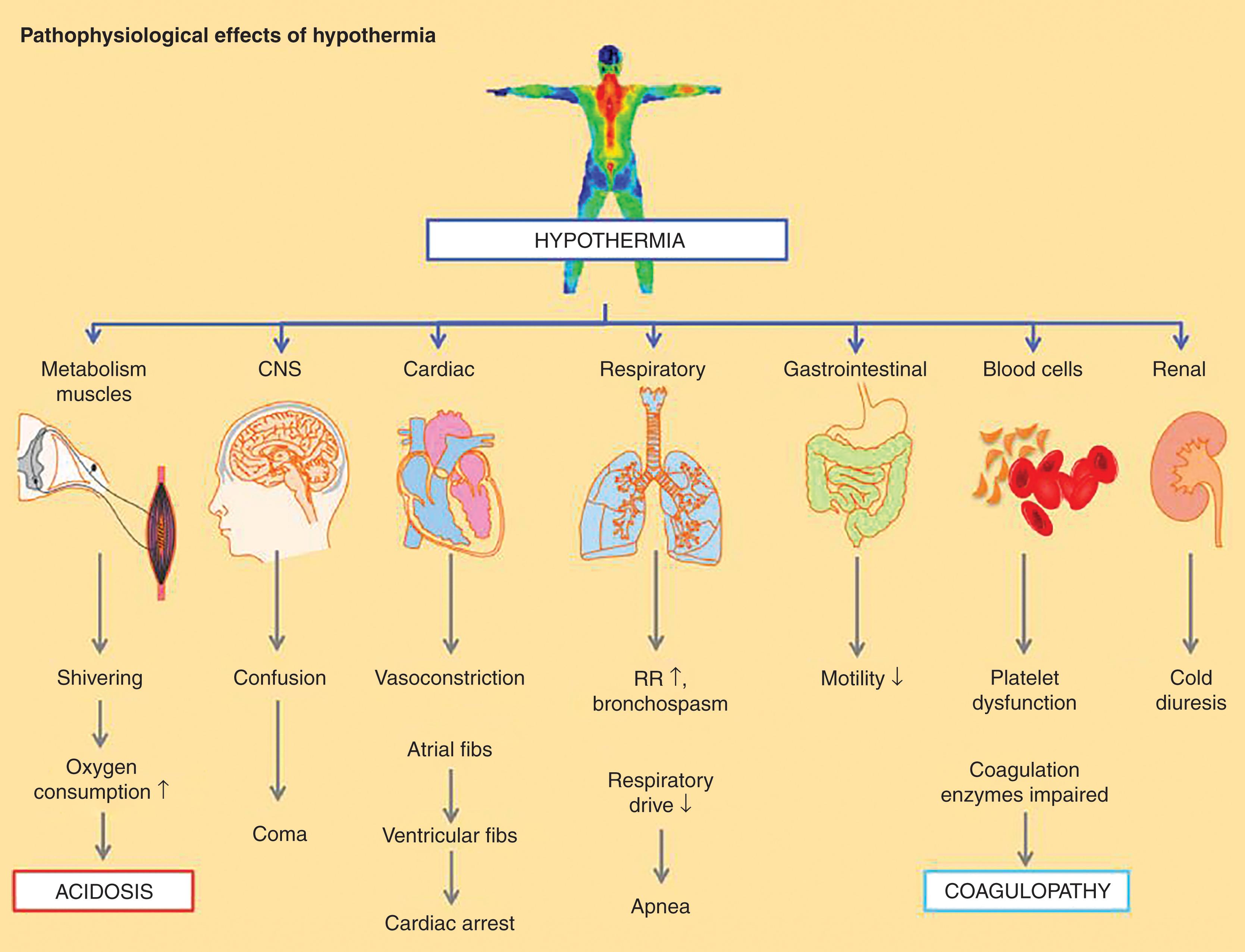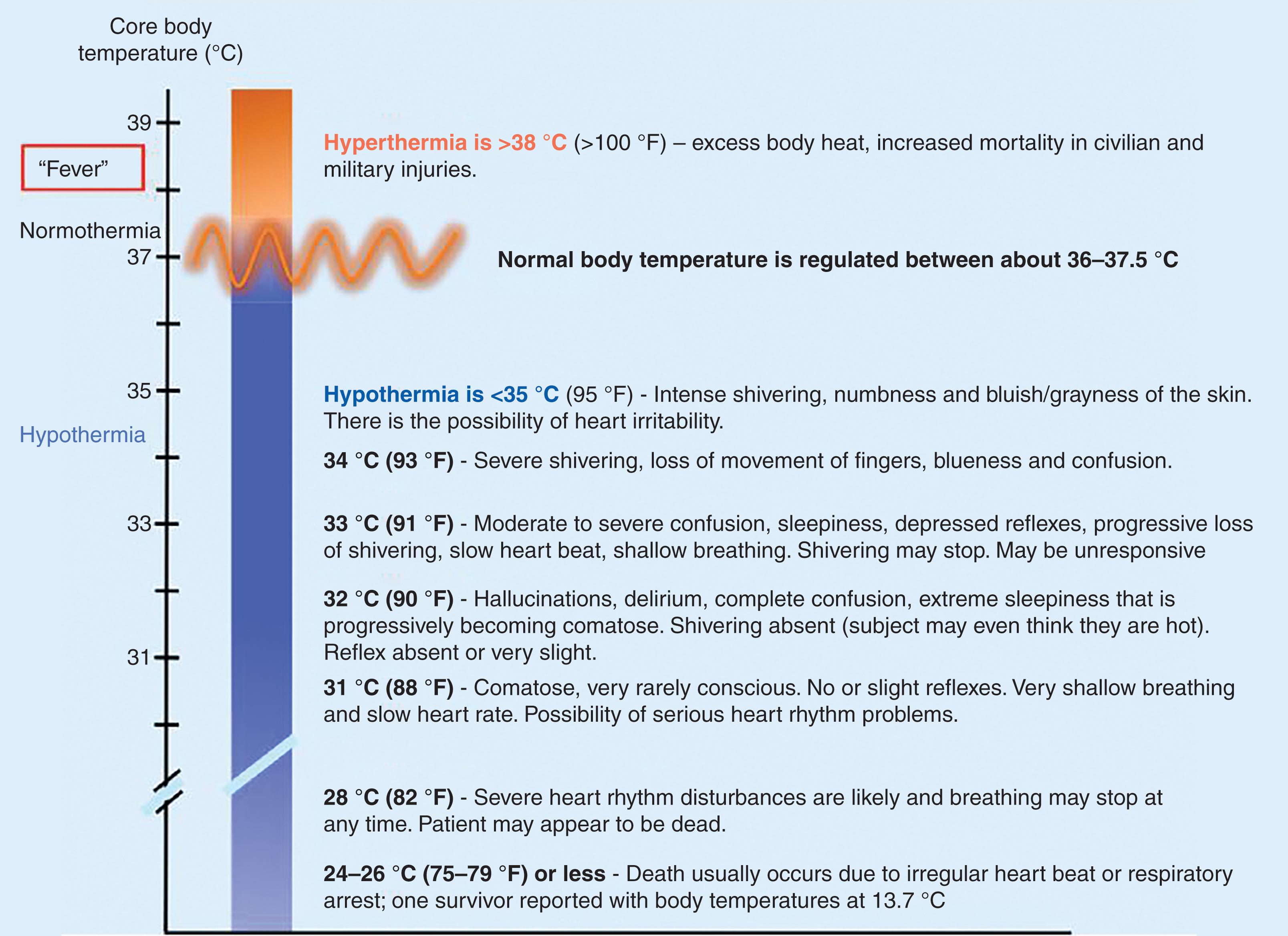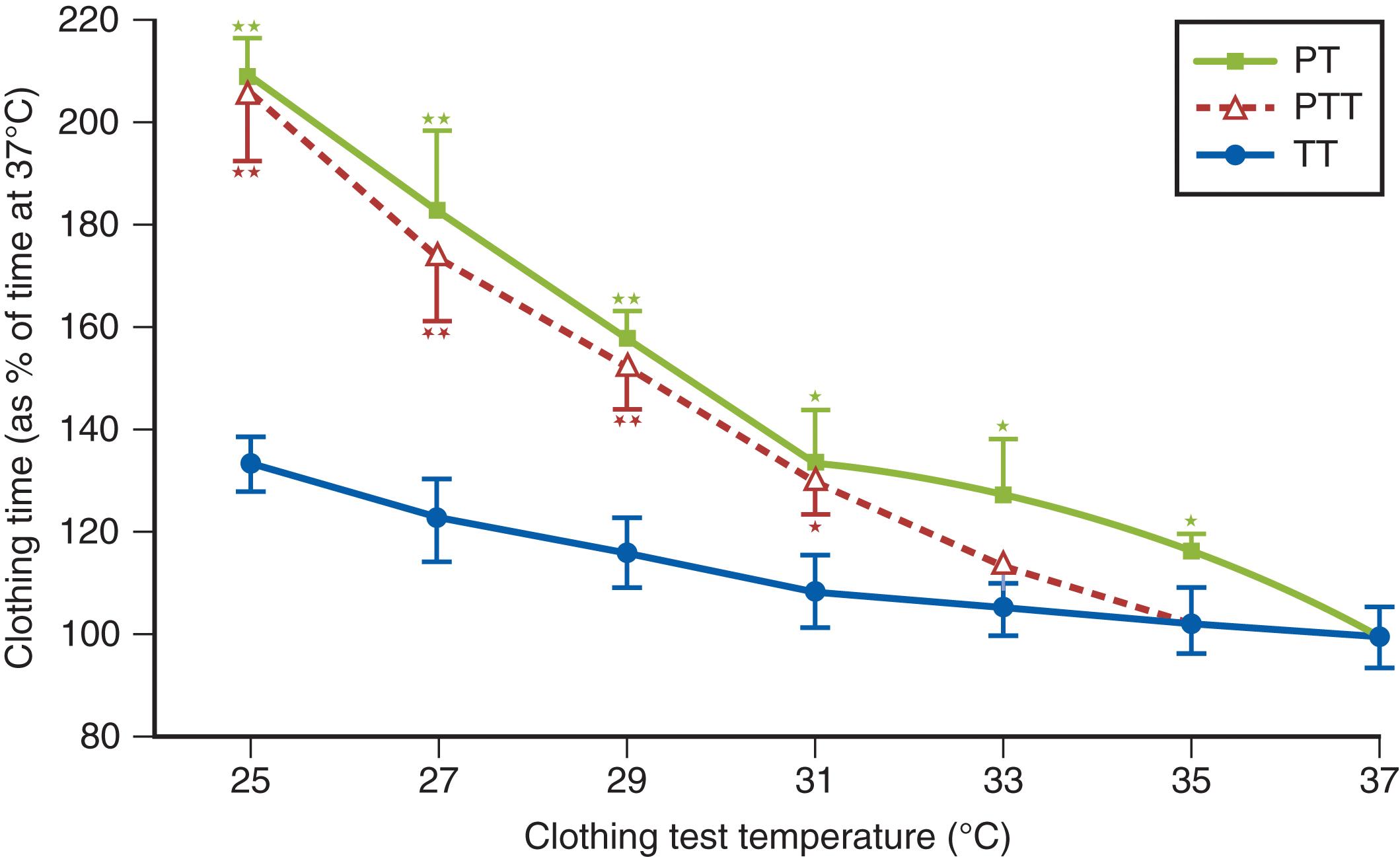Physical Address
304 North Cardinal St.
Dorchester Center, MA 02124
Human beings, as homeotherms, maintain their temperature within a narrow range around a core temperature of 37° C. Hypothermia can be classified as accidental/spontaneous or induced/therapeutic. Classical definition for hypothermia is a body core temperature less than or equal to 35° C. For trauma patients, however, Advanced Trauma Life Support (ATLS) defines hypothermia as any core temperature below 36° C (96.8° F). Hypothermia causes significant dysfunction to multiple organ systems and in combination with coagulopathy and acidosis as described by Burch and Moore (“lethal triad”) or cardiac dysrhythmias as described by Asensio (“lethal tetrad”) can worsen outcomes in critically ill trauma patients. Maintaining normothermia is a vital component to the management of the trauma patient. Studies have shown that trauma patients have a significantly higher mortality rate when suffering from hypothermia. Multifaceted management strategies focused on prehospital and hospital hypothermia prevention can avoid the physiologic consequences that can worsen the prognosis of trauma patients.
Accidental or spontaneous hypothermia can be considered primary or secondary. Primary accidental hypothermia occurs in patients with normal heat production who are submerged in cold water or stranded in a cold environment. These patients initially have increased heat production due to shivering, but temperature preservation is eventually overwhelmed by the degree of cold stress. Secondary accidental hypothermia is the most common cause of hypothermia for the trauma patient, and it is due to body heat loss during shock. Humans produce heat by combustion, as a byproduct of oxygen consumption. Shock occurs once there is a decrease in systemic oxygen delivery to a point at which normal oxygen consumption can no longer be maintained. This decrease in heat production due to a lack of oxygen consumption makes the trauma patient vulnerable to even mild cold stresses, such as in the emergency department or operating room. Through this mechanism, all seriously injured patients in shock are at high risk of developing hypothermia.
Unfortunately, up to 40% of polytrauma patients suffer from accidental hypothermia. Accidental hypothermia is classified as mild (36°C–34°C), moderate (34°C–32°C), and severe (<32°C). Accidental hypothermia can occur both in the prehospital and during-hospital course. Prehospital risk factors include injury severity, underlying medical conditions, and wet clothing. Risk factors within the hospital include exposure, cold fluids/blood products, general anesthesia, prolonged surgery.
There is a long history of research on the use of induced hypothermia to improve mortality and outcomes with those suffering from a traumatic brain injury (TBI). Clifton has conducted several randomized, multicenter clinical trials, most recently published in 2011, that investigated induced hypothermia in TBI patients. These studies have demonstrated no difference in mortality and trends toward poorer outcomes with two of their studies terminating early because of futility. A recent randomized trial in 2015 compared the use of therapeutic hypothermia plus the standard of care versus the standard care alone for patients suffering from a severe TBI. The study found that the use of therapeutic hypothermia to reduce intracranial pressure worsened outcomes, and those managed with the standard care alone were found to have statistically significantly higher favorable neurologic outcomes. In 2016, the Brain Trauma Foundation fourth edition guideline for management of severe traumatic brain injury was published. For the practice of prophylactic hypothermia in severe TBI management, early (within 2.5 hours) and short-term (48 hours post injury) use was not recommended to improve outcomes in patients with diffuse injury. In 2018, Copper published their randomized trial comparing early prophylactic hypothermia versus normothermia management on neurologic outcomes in patients suffering from severe TBI. Their study showed that early prophylactic hypothermia did not improve neurologic outcomes at 6 months compared to normothermia management and therefore does not support the use of prophylactic hypothermia in severe TBI patients.
The detrimental effects of induced hypothermia appear to be more severe in children. In 2008, a multicenter randomized trial compared early hypothermia versus normothermia management in children with traumatic brain injury. There were 225 children enrolled, and the study showed that early initiation of hypothermia did not improve neurologic outcomes and showed an increase in mortality. Adelson in 2013 performed another multicenter randomized trial comparing early hypothermia versus normothermia management. The study was terminated early due to futility but demonstrated that early hypothermia did not reduce mortality or improve neurologic function. A recent meta-analysis performed in 2017 found children undergoing induced hypothermic management had a 66% increase in mortality and worsened neurologic outcomes.
In severely injured trauma patients, animal models have shown survival and neurologic recovery after induced hypothermia during cardiac arrest in hemorrhagic shock. Given the lack of human clinical trials examining the role of therapeutic hypothermia in severe trauma patients, a recent Food and Drug Administration–approved study (NCT01042015) is investigating the role of therapeutic hypothermia in patients suffering from cardiac arrest due to hemorrhagic shock. Those presenting to the emergency room in traumatic arrest from hemorrhagic shock will have hypothermia induced and then taken for control of surgical bleeding followed by continued resuscitation and rewarming with cardiopulmonary bypass. The primary outcome of the study is survival to hospital discharge without major disability. The study is currently enrolling patients and with estimated completion by the end of 2020.
Hypothermia causes multiorgan system dysfunction, which includes effects on the cardiovascular, immunologic, neurologic, and coagulation system ( Fig. 1 ). The systemic dysfunction caused by hypothermia produces the clinical signs and symptoms that allow providers to identify patients in a hypothermic state ( Fig. 2 ).


Perhaps the most serious effect of hypothermia is the impact on coagulation ( Fig. 3 ). The extent to which hypothermia causes coagulation problems is often underestimated because of the multiplicity of potential causes for coagulation impairment that are usually present. These patients often have acidosis, tissue trauma, shock, dilution of circulating blood volume, and reduced concentrations of clotting factors. Normal coagulation requires adequate platelet count and function and adequate clotting factor levels and activity. Theoretically, hypothermia could affect blood coagulation in each of these domains.

Experimental studies in dogs have demonstrated a reversible thrombocytopenia associated with systemic hypothermia. However, this only occurs at levels of hypothermia well below that typically seen in a trauma setting (<30° C).
Platelets experience a reversible inhibition of function during hypothermia, mediated at least in part through the temperature dependence of thromboxane B 2 , a potent vasoconstrictor that stimulates platelet aggregation. The effect of hypothermia was demonstrated by Valeri who induced hypothermia in baboons, but kept one arm normothermic by using heating blankets and radiant warmers. Simultaneous bleeding time measurements in the warm and cold arm were 2.4 and 5.8 minutes, respectively. Owing to the effect of hypothermia on platelet function, transfusions in hypothermic patients may not be effective at reducing blood loss without concomitant, effective core rewarming.
Become a Clinical Tree membership for Full access and enjoy Unlimited articles
If you are a member. Log in here